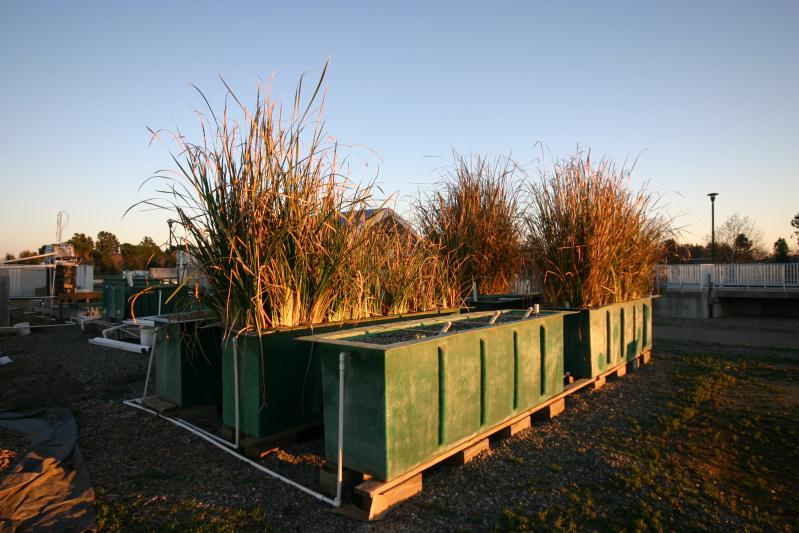Advancing constructed wetlands and denitrifying bioreactors to abate edge-of field nitrogen losses
Anoxix treatment wetlands for denitrification
Situation: Excess nitrogen (N) in wastewater can contaminate groundwater and drinking aquifers leading to health concerns. Constructed open water wetlands can effectively remove N from wastewater. Subsurface flow constructed wetlands are generally less effective at removing N, but their performance can be improved by adding an alternative carbon source.
Actions: The purpose of this study was to evaluate the ability of subsurface flow constructed wetlands filled with an organic woodchip-media to treat nitrified wastewater (i.e., the wastewater N content underwent primary treatment to convert ammonia-N to nitrate-N). This study was conducted over a 2 year period by the University of California Davis. Researchers looked specifically at nitrate-N removal performance and the effects of temperature, length of operation, hydraulic properties, and aquatic plants.
 Take-home message:
Take-home message:
- The woodchips used were an effective and inexpensive source of carbon media for denitrification of wastewater nitrate-N.
- Longer term monitoring was recommended to estimate long-term nitrate-N removal rates and determine temperature relationships for woodchip wetlands. There was some decline in removal rates over time and with decreased temperature.
- Plants were found to have several beneficial effects, including buffering against low temperature effects.
For more information:
- Leverenz, H.L., K. Haunschild, G. Hopes, G. Tchobanoglous, and J.L. Darby. 2010. Anoxic treatment wetlands for denitrification. Ecological Engineering 36:1544-1551.
- Email Harold Leverenz at hlleverenz@ucdavis.edu